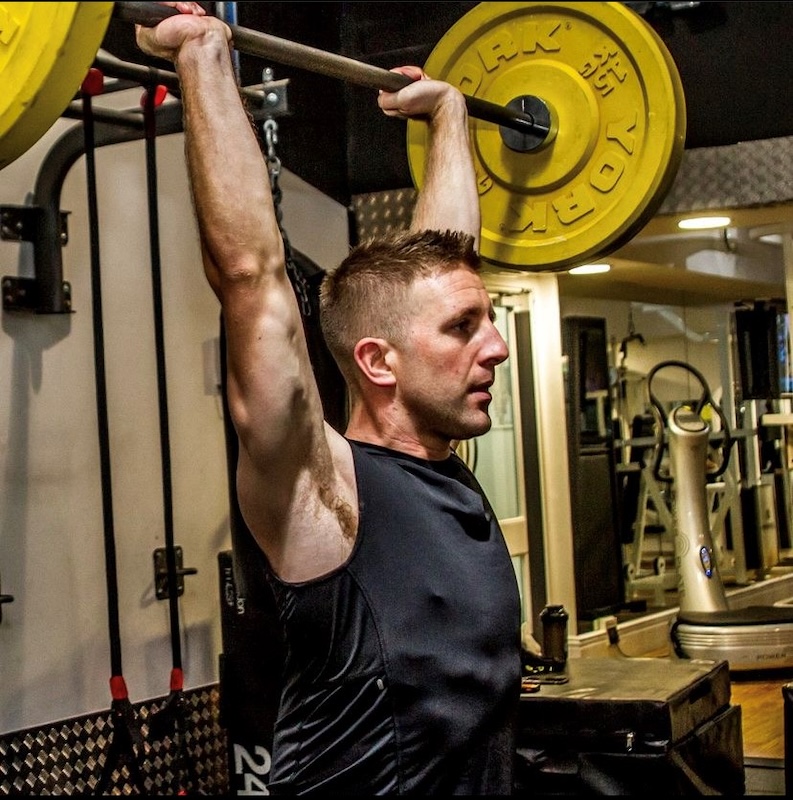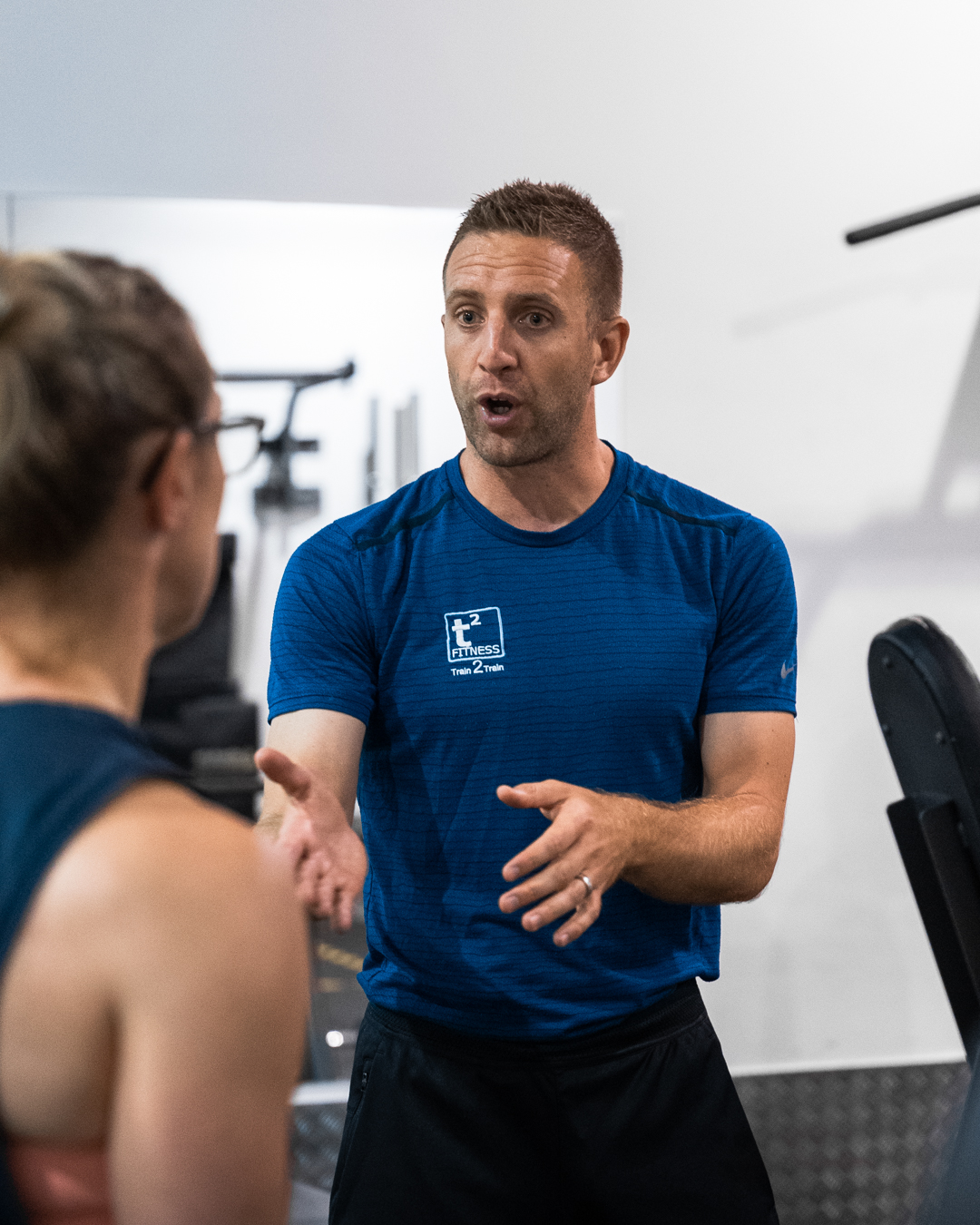Stu Gatherum highlights some principles that relate to strength training to help you and your clients get stronger.
When we think of strength training, what images does it evoke? Knee wraps? Clouds of chalk? Lifting belts? Smelling salts?
Maybe, but should it evoke these images? Is strength training simply the pursuit of lifting unimaginably large objects? Is it an arena cordoned off for those pursuing elite levels of mass-moving?
If we are observing strength training from a ‘purist’ point of view, then perhaps the answer to all of the above is a resounding ‘yes’. Strength by definition is ‘the capacity to withstand great force or pressure’1. In the world of fitness, we define strength as ‘the maximal ability to lift a load’2.
It is often said that beauty is in the eye of the beholder and I, for one, view strength in a similar way – through a prism of several vantage points as it relates to each person and their individual needs. Strength can be expressed with maximal lifts, of course. But it is hard to argue that the ability to perform a resistance-based task that you could not perform prior to training, such as a push-up, a pull-up or simply standing from a seated position, does not qualify as an increase in strength. We all express strength in some form or another and, for that reason, I would argue that we all need it. It is the exercise prescription and its relevance to the individual that we must remain mindful of. The aforementioned chalk and knee wraps need not feature when you are a beginner seeking to begin resistance training, or when you are progressing to slightly heavier weights following a period of introductory training.
Now that we have looked at the term ‘strength’ – and taken away a number of the potential barriers of wording and viewpoint – let’s all agree that, if we are able to do something now that we could not do previously, then we are getting stronger.
However, we do need a structure for this article and, for that purpose, we will preface the expression of strength as that related to the performance of exercise over a one- to six-rep range.
If you are new to strength training, you should perhaps stay on the upper edges of this rep range. In truth, there aren’t many individuals who truly need to train at their absolute max with only a single rep – and even fewer who need to do this on a regular and consistent basis.
So, in the words that follow, I will highlight some different principles that relate to strength training and then add some context to them.
Principle 1: Reps and sets – one to six in both cases
Why one to six? Because this is where the sweet spot of ‘neural development’ over ‘local muscular development’ lives3. And this is one of the underlying principles of strength training as we know and understand it.
Whenever you engage in training of any description, your nervous system (NS) is the primary bodily system that pulls the strings. You see, it is the NS that must recruit the necessary musculature in the necessary sequence to ensure you successfully fulfil the task at hand. When it comes to weight training, this occurs in a sequential manner from Type 1 through to Type 2a and 2b fibres, depending upon the demands.
Initially, it will utilise Type 1 muscle fibres, not known for their maximal capacity but rather their endurance. Once it is evident that the required strength cannot be found in these fibre types, the NS will utilise the next level up in terms of capacity, in a similar way to a car going from gear one to gear two. In this case, gear two would be Type 2a muscle fibres, our intermediate fibres. Assuming these can manage the task presented, the NS has spared the body additional undue fatigue by higher level recruitment. If, however, they cannot manage the stress they are presented with, the NS will send out the signal to the highest power-potential fibres we have – Type 2b. Equally well known for their high force capacity, as well as their complete lack of stamina, these fibres are inefficient and energetically expensive. But, in the case of maximal efforts, they are often the difference between success and failure.
It is the synchronised progression ‘through the gears’ by the NS that enables us to become progressively stronger. With early recognition of the stresses comes faster stimulation of the various motor units present within a given muscle. This leads to better levels of force production and, ultimately, strength over time.
As we get past the six-rep range, typically we are not lifting a weight that is demanding enough to get us into the higher levels of recruitment. So, this can result in the utilisation of middle-gear muscle fibres, which in turn can also lead to local muscular fatigue, rather than ‘global’ and neural fatigue4.
It is also important that we consider rest, as we will come to later. Heavy loads and low reps necessitate longer recovery.
Principle 2: Progressive overload
Given principle 1, it is easy to grasp that principle 2 must be adhered to in programming. Through consistent training, a task becomes more manageable. As this occurs, the NS need not shift to its highest gear to perform a task that used to represent a nearly impossible challenge. So, if you put a self-imposed ceiling on your training, then gradually the task will become easier, and less and less stimulation will be required to achieve said task – in our instance, to lift a given weight.
So, to combat this, we should consider progressive overload in our training plans. As a given weight becomes too easy, you should begin to introduce greater levels of challenge. This might come in the form of more weight or it could come in the form of more reps or more sets. Providing we do not exceed six reps, we are likely to continue in the progression of strength.
Principle 3: Chill
I mean this in every sense of the word. For every action there is an equal and opposite reaction. You have surely heard this before. So, for every heavy lift that requires lots of effort, we must counteract it with equal relaxation and recovery.
This stands just as true within a training session as it does between sessions. Rest periods in strength training sessions should be honoured. This is not the time to throw in a superset to fill the time. It is important that we must allow the NS an opportunity to recover, in order that it co-ordinates the next effort. Inadequate recovery will lead to a lack of available resources for the next effort5.
Between sessions, we should consider our recovery strategy also. Adequate sleep and nutrition are required if we are to be able to replicate the same efforts in subsequent sessions, and trying to achieve these same heights with minimal time off will surely result in lack of performance and, potentially, injury. Strength training, more than any other training type, requires you to rest. Make the most of it!
Principle 4: Exercise selection
Exercise choice is an important consideration for anyone who wants to improve their overall strength. It is only possible to really achieve overload with one to six reps when performing compound exercises if we really want to guarantee technique6 – and we should absolutely want to do this.
You see, when performing isolation exercises, we are typically not demanding enough recruitment from the NS due to the lower levels of muscle mass required. Equally, it is far too easy to lose technique when we overload these smaller exercises with too much weight.
There are a few exceptions where isolation exercises may present a real strength challenge, but not so much that we would name them as a ‘principle’.
Summary
I really appreciate you taking the time to read and absorb this article, and I hope it helps you on your quest to become stronger. While it isn’t quite short enough for you to read during a standard rest period between strength sets, I feel it is a short, handy guide to assist you in your journey to get stronger. If you are hoping to get stronger in training, keep your lifts compound, your reps low, your rest long and your technique sound.
This previously featured in the Fitpro digital magazine.
How about checking out both of Stu’s online educations? S&C – Foundation Needs Analysis and S&C – Advanced Periodisation, Programming and Training Principles
References
- Oxford Dictionary
- Bushman B (2017), ACSM Complete Guide to Health and Fitness, Updated Activity and Nutrition Guidelines for Every Age, Second Edition, Human Kinetics.
- Beachle and Earle (2000), NSCA Essentials of Strength and Conditioning, Second Edition, Human Kinetics.
- Foran B (2001), High Performance Sports Conditioning, Modern Training for Ultimate Athletic Development, Human Kinetics.
- Tortora and Derrickson (2009), Principles of Anatomy and Physiology, Organisation, Support and Movement, and Control Systems of the Human Body, 12th Edition, John Wiley and Sons, 1.
- Clark, Lucett, and Corn (2008), NASM Essentials of Personal Fitness Training, 3rd Edition, Lippincott, Williams, and Wilkins.








